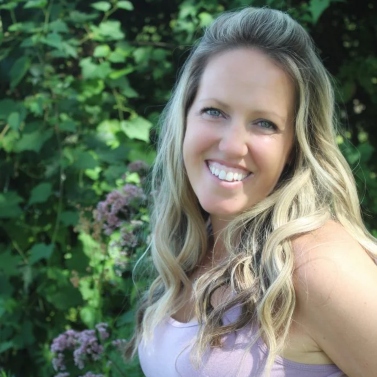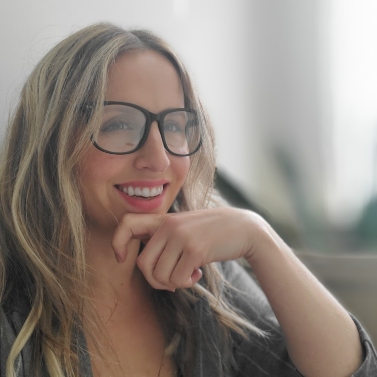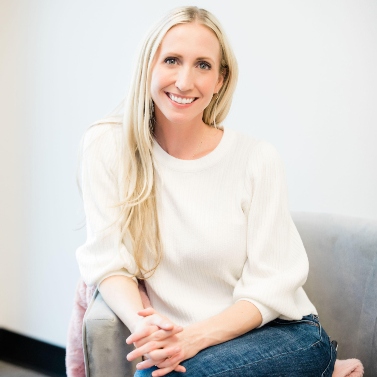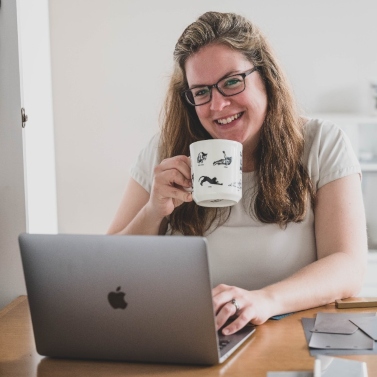Lullabies or silence? Darkness or night lights? Swaddles or blankets? Determining the most effective and safe sleep environment for your new baby can be hard, especially when they can’t tell you what they prefer yet. Keep reading to see what other baby sleep experts suggest doing to your infant’s sleep environment.

Patti Read
Patti Read, Certified Pediatric Sleep Consultant and owner of Goldilocks Sleep Solutions.
Make the Room Cave-like
Your baby’s room should be cave-like. After all, there’s a reason bears choose caves as their hibernation location right? Keep the room cool. The ideal temperature should be 68 to 72 degrees Fahrenheit.
Keep the room dark, and the darker the better. Blackout shades and curtains are perfect to help achieve this. Young babies do not require a night light, but if your child is older and expressing a fear of the dark, look to use a red or other warm-colored night light. Blue night lights can interfere with your child’s natural production of melatonin, the sleep hormone.
As in nature, your child’s sleep environment doesn’t have to be completely quiet. White noise, no louder than 65dB, is an excellent tool to use to block out external noises that might disrupt your child’s sleep. Lullabies and other music can be used in preparation for sleep but should not be used while falling asleep or throughout the night as the varying tones can become too stimulating for your child’s brain.
Finally, the crib or bed should be pretty bare. The American Academy of Pediatrics recommends the sleeping area for a baby, younger than a year old, be a firm mattress with a well-fitting sheet, and then nothing else. A pacifier with no strings attached is ok, but besides that, the area should be free of blankets, pillows, crib bumpers, stuffed animals, and other toys that could pose a safety issue.
Keep it Consistent
Keep the environment the same, no matter where you are. If you use blackout curtains and a white noise machine at home for sleep, take them with you when you travel places (hotels, friends’ houses, etc.) to replicate it so your baby feels comfortable and knows what is expected of them for easier sleeping on the go.
Nix any blue lights in the room. It’s been a topic of discussion for years that this could affect the baby’s sleep. Stick to red/orange toned lights if needed.
Keep that environment specific for sleep. If your baby is sleeping in the crib, keep the crib for sleep only. Don’t play with the baby in their crib. Don’t load it full of toys and stuffies that don’t belong in there for sleep.
Starting at a safe age, get your baby a super soft and cuddly lovey to sleep with and ‘fall in love with.’ Make sure you buy three or four of the same one because chances are, they are going to be sleeping, sucking, and chewing on that thing for years. And preferably get a tan/brown color, because it’ll inevitably become soiled over the years, and a quasi-dingy brown or tan teddy is a lot less gross-looking than a dingy pink one.

Alison Ruks
Alison Ruks, CEO of Mobobaby Products Co. Inc. and a certified child sleep consultant.

Chrissy Lawler
Chrissy Lawler is a baby sleep consultant, a licensed marriage and family therapist, and the founder of The Peaceful Sleeper.
White Noise, Darkness, and Swaddles
Use a white noise machine that is positioned away from the baby and where the disruptive noise is coming from (by the door, for example).
Create a dark space by using blackout curtains (garbage bags and tape also work). Swaddle your baby. If they are beginning to roll, there are fantastic swaddle transition products such as the Merlin Magic Suit and Dreamland Baby Weighted Sleep Sacks.
Make a Safe and Separate Space for the Baby
Honestly, when bringing the baby home from the hospital and for the first three months you only need a safe, separate place from your bed for the baby to sleep.
What does safe mean? The room needs to be warm enough and the baby needs to be safely swaddled while they aren’t rolling over. The bassinet should have a firm mattress meant for zero to nine month-olds with no pillows, no extra blankets, no Bumpers, no stuffed animals, and no hats or loose clothing. All these items lead to a higher risk of SIDS.
Tools to help babies sleep are sound machines nearby so that you can control the sound level and a dark environment to help teach the baby when to sleep. As they get older, darkness will help them regulate their sleep and have better quality sleep.
As your little one grows, you will be able to transition them to their own room and a crib or mini crib (around three to six months old). When they are sleeping or actively using the crib you want to make sure that you have all the same strategies as you did when they were infants.
They need to stay on a firmer mattress for nine months. You need to be able to lower the crib as your child grows so there is no chance of them climbing out, but keep it at a comfortable level for you to pick up your baby. No additional pillows, blankets, or stuffed animals should be introduced into the crib until your child is 15 months old.

Antoinette Belson
Antoinette Belson, Founder and Lead Designer of Happy Your Space.

Scott McKinney
Scott McKinney, Head of Marketing at Debt Bombshell.
Be Deliberate with Colors and Light
Use Calming Colors – Selecting neutral, cool colors for your nursery’s palette is the best option when it comes to creating the perfect sleep environment. Many parents opt to decorate nurseries with bright, extravagant colors and details which can prove to be overstimulating for sleep. Consider choosing soft earth tones and blushes instead for that nice, soothing mood.
Limit Light Sources – Babies not only require lots of sleep during the night but also during the day too! This means limiting the light sources in your nursery, such as investing in blackout curtains if it’s situated in a place that receives a lot of direct sunlight. Adding soft glow night lights is also a good idea, as it helps you navigate the room without causing any disturbances to the baby.
If you would like one-on-one help for cultivating healthy sleeping habits in your infant or toddler, contact us at Tiny Transitions. We’ve helped thousands of families create sustainable sleep solutions and can do the same for you.
This is a crowdsourced article. Contributors are not necessarily affiliated with this website and their statements do not necessarily reflect the opinion of this website, other people, businesses, or other contributors.
